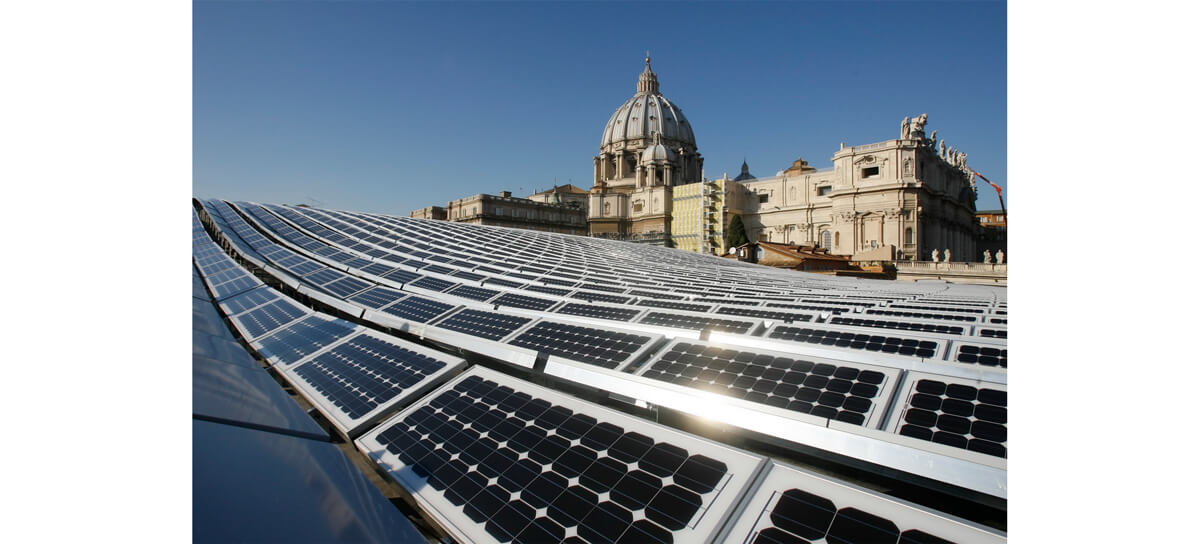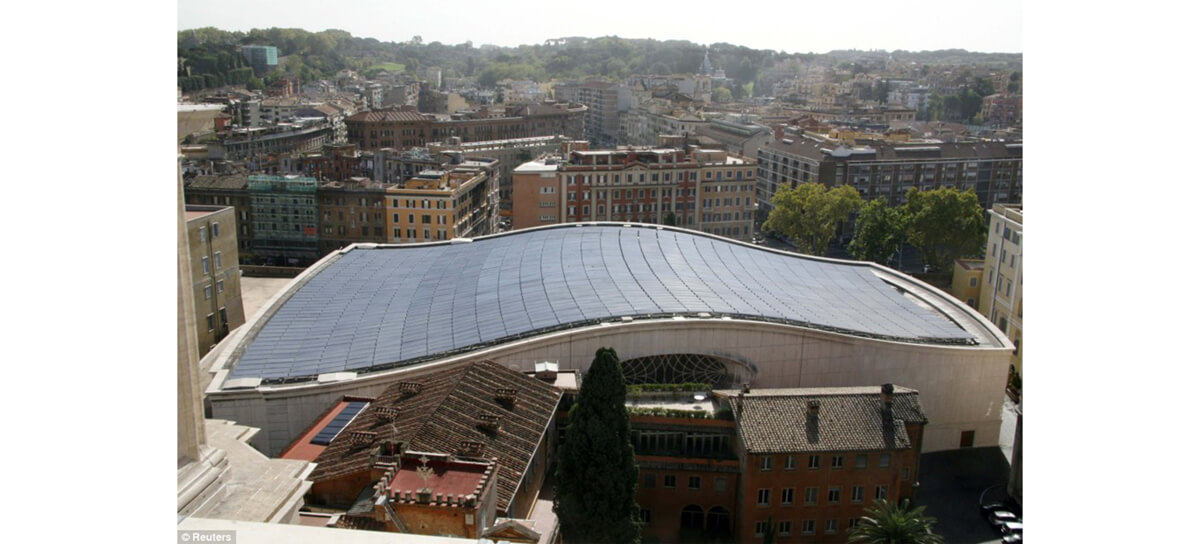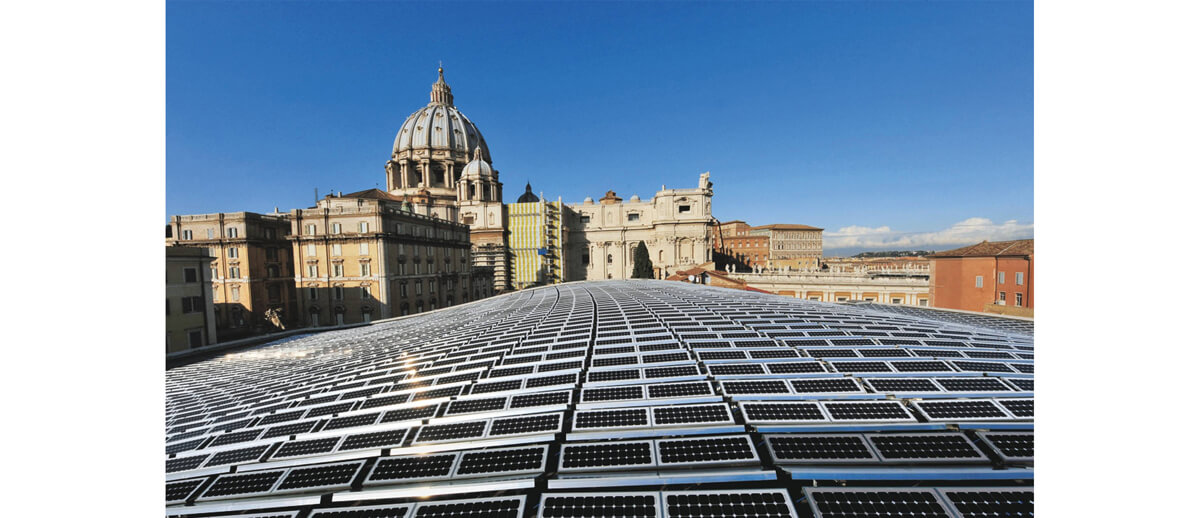In recent years, there has been a growing emphasis on the importance of renewable energy sources as a means to combat climate change and reduce our carbon footprint. Many institutions, including religious organizations, have taken steps towards adopting cleaner and more sustainable energy solutions. One prominent institution that often comes to mind when discussing matters of faith is the Vatican. As a symbol of the Catholic Church's influence and spiritual guidance, the Vatican's stance on solar energy carries significant weight.
The Vatican's Commitment to Environmental Stewardship:
Under the leadership of Pope Francis, the Vatican has been at the forefront of advocating for environmental stewardship and addressing climate change. In 2015, the Pope released an encyclical titled "Laudato Si'" which highlights the need for urgent action to protect the environment and care for our planet. This document reinforces the importance of renewable energy sources, emphasizing the moral obligation to preserve the Earth for future generations.
Solar Energy Initiatives:
Recognizing the significance of solar energy, the Vatican has taken steps to harness the power of the sun. In 2008, the Vatican installed its first solar power system atop the Paul VI Audience Hall, a building used for papal audiences and conferences. This photovoltaic system consists of 2,400 solar panels, generating approximately 300 megawatt-hours of electricity annually, thereby reducing the Vatican's reliance on traditional energy sources.
Furthermore, in 2010, the Vatican's Governorate announced plans to install additional solar panels on several buildings within the Vatican City State, including the Vatican's main railway station. This initiative aimed to further reduce the Vatican's carbon footprint and promote the adoption of renewable energy technologies.
Pope Francis and the Vatican have also actively engaged in promoting renewable energy globally. In 2016, the Pope met with the founder of the Global Foundation, Jeremy Rifkin, to discuss sustainable development and the importance of transitioning to renewable energy sources. These efforts demonstrate the Vatican's commitment to leading by example and advocating for change on a global scale.
Impact and Future Prospects:
While the solar energy initiatives within the Vatican are relatively modest in scale, they carry immense symbolic value. By embracing renewable energy, the Vatican sends a powerful message about the urgent need to transition to sustainable practices. It serves as a reminder that institutions, regardless of their size or influence, have a role to play in promoting environmental responsibility.
Looking ahead, it is important to acknowledge that the Vatican's efforts are part of a broader push towards sustainability within the Catholic Church. Pope Francis has consistently emphasized the importance of environmental protection and has encouraged Catholics worldwide to take action. The Vatican's initiatives serve as a catalyst, inspiring other religious institutions, individuals, and governments to follow suit.

Further Steps and Potential Expansion:
While the Vatican's current solar energy initiatives are commendable, there is room for further expansion and exploration of renewable energy technologies. As technology continues to advance, the cost of solar panels and associated equipment has decreased, making it more accessible and financially viable for institutions of various sizes.
Expanding the installation of solar panels on additional buildings within the Vatican City State could significantly increase the overall energy production from renewable sources. By harnessing more solar energy, the Vatican could reduce its reliance on traditional energy sources and further contribute to a sustainable future.
Moreover, the Vatican's influence extends beyond its own city-state. The Catholic Church has a vast network of churches, schools, and charitable organizations worldwide. Encouraging and supporting these entities in adopting solar energy systems could have a far-reaching impact on promoting renewable energy at a local level. The Vatican could provide guidance, resources, and financial assistance to help these organizations implement solar energy initiatives and reduce their carbon footprint.

Collaboration and Advocacy:
In addition to expanding its own solar energy infrastructure, the Vatican can continue to leverage its influence to advocate for renewable energy on a global scale. By partnering with governments, international organizations, and other religious institutions, the Vatican can promote sustainable practices and encourage the adoption of solar energy and other renewable technologies.
Engaging in research and development partnerships with universities and scientific institutions could also yield innovative solutions for clean energy. Collaborative efforts can focus on improving solar panel efficiency, storage technologies, and exploring other renewable energy sources to diversify the Vatican's sustainable energy portfolio.

Education and Awareness:
The Vatican's commitment to solar energy can be complemented by educational initiatives that raise awareness about the importance of renewable energy and environmental stewardship. By integrating sustainability into religious teachings and educational programs, the Vatican can inspire individuals to embrace renewable energy solutions in their own lives and communities.
Furthermore, organizing conferences, workshops, and seminars on renewable energy and climate change can bring together experts, policymakers, and representatives from different faiths to exchange ideas and collaborate on sustainable solutions. These efforts can foster dialogue, knowledge sharing, and collective action towards a more sustainable future.
The Vatican's utilization of solar energy represents a significant step towards environmental stewardship and serves as a powerful example for other institutions and individuals around the world. By embracing renewable energy, the Vatican not only reduces its own carbon footprint but also demonstrates the moral imperative of taking action to combat climate change.
Expanding solar energy installations, fostering collaborations, promoting education, and advocating for sustainable practices are essential avenues for the Vatican to further its commitment to renewable energy. By continuing to lead by example, the Vatican can inspire others to embrace renewable technologies, amplify the call for urgent climate action, and contribute to a more sustainable and greener future for all.








